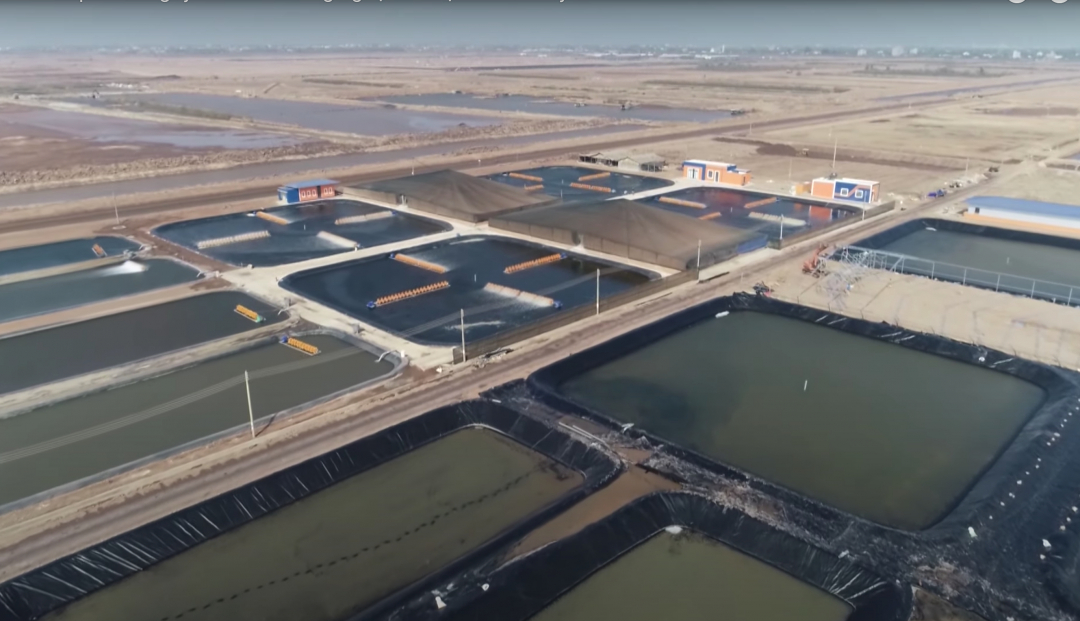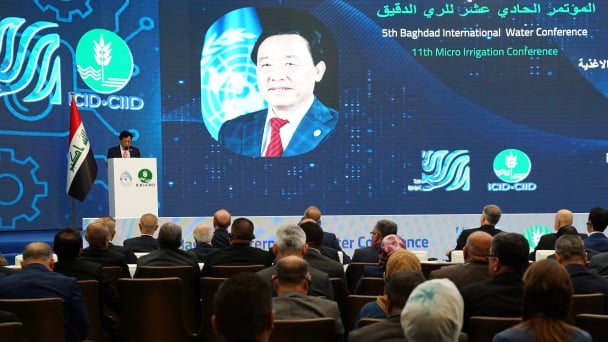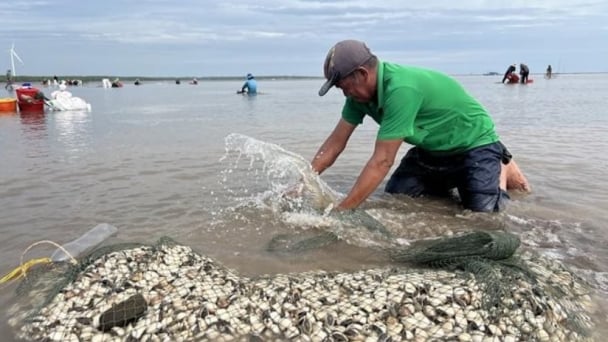May 29, 2025 | 09:05 GMT +7
May 29, 2025 | 09:05 GMT +7
Hotline: 0913.378.918
May 29, 2025 | 09:05 GMT +7
Hotline: 0913.378.918
Bac Lieu has the godsent advantages for fisheries development with 51km of coastline. This is also a locality located between the provinces of Ca Mau, Kien Giang, Hau Giang, Soc Trang - key shrimp farming areas of the country.

Shrimp farming area of Bac Lieu Hi-tech Shrimp Hatching JSC with a total area of tens of hectares.
In the first 6 months of 2021, although agricultural production faced many difficulties due to the effects of drought, saltwater intrusion and the Covid-19 pandemic, the entire agricultural sector of Bac Lieu province still grew 6.42% over the same period last year. Specifically, seafood accounts for over 58% of the industry value, making an important contribution to economic growth, helping Bac Lieu province realize the dual goal of both controlling the disease and ensuring growth.
“The agricultural sector continues to be an important pillar in the province’s economic development”, said Mr. Pham Van Thieu, Chairman of the People's Committee of Bac Lieu Province.
In regard to seafood production, the whole province has more than 300 shrimp seed production and trading establishments and several large enterprises in the field of aquatic products (Viet - Uc Bac Lieu JSC...), each year produces about 32 - 35 billion seeds of black tiger prawn and white-leg shrimp.
Moreover, the rice-shrimp farming model has had many domestic and foreign organizations assessed to develop sustainably and is 15 - 30% more profitable than rice monoculture. The special thing is that this farming model limits the use of antibiotics and pesticides, helping farmers easily produce and overcome technical barriers in export, thereby bringing very high economic efficiency.

Thanks to the application of high technology to production, farmers and businesses in Bac Lieu province have actively controlled diseases, improved the quality of commercial shrimp, and met the requirements of many strict markets.
Currently, Bac Lieu province has 45 cooperatives and 79 groups of aquaculture cooperatives. Through the first 6 months of 2021, companies have linked production with an area of nearly 1,781 hectares. There are also 40 shrimp processing and exporting factories in the area with a designed capacity of 190,000 tons/year - ranking third in the country, making an important contribution to the consumption of shrimp products in the province in particular and the whole country in general.
The province is also focusing on building disease-free aquaculture areas according to the standards of the World Organization for Animal Health. As a result, one hatchery area has been recognized, serving as a premise for exporting whole shrimps to Australia and other strict markets, contributing to building the national brand of Vietnam's shrimp industry associated with stable output for the export market.
In order for the shrimp industry to develop commensurate with its potential, the Chairman of the People's Committee of Bac Lieu province proposed the Ministry of Agriculture and Rural Development soon implement projects and systems of works to regulate and supplement water sources for aquaculture in the southern regions.

(VAN) FAO’s Director-General addresses the 5th Baghdad International Water Conference.
/2025/05/26/1716-4-nongnghiep-191706.jpg)
(VAN) Chain linkages, technological innovation, and raw material zoning are three strategic pillars for the coconut industry to strongly develop and elevate its position on the global agricultural map.
![Advanced mariculture – an inevitable trend: [4] Accompanied by scientists](https://t.ex-cdn.com/nongnghiepmoitruong.vn/608w/files/sohk/2025/05/13/1941-pgsts-vo-van-nha-140958_717.jpg)
(VAN) According to Assoc. Prof. Dr. Vo Van Nha, Director of the RIA III, the development of advanced offshore mariculture is no longer an option but an essential path for Vietnam’s fisheries sector.

(VAN) Vietnam is intensifying the development of mollusk farming areas that meet international standards, aiming for sustainable growth and enhancing its export position in the global seafood market.
![Advanced mariculture – an inevitable trend: [3] Policy-driven momentum](https://t.ex-cdn.com/nongnghiepmoitruong.vn/608w/files/doanhtq/2025/05/21/0104-0616-0348-nuoi-bien-170339_789.jpg)
(VAN) To ensure the success of offshore mariculture that uses advanced technologies, it is essential to establish supportive policies that inspire both individuals and enterprises to invest with confidence.
![Advanced mariculture – an inevitable trend: [2] Outstanding results](https://t.ex-cdn.com/nongnghiepmoitruong.vn/608w/files/sohk/2025/05/12/4632-4136-nuoi-bien-11-164117_819.jpg)
(VAN) Pilot models of high-tech offshore mariculture in Vietnam, particularly in the South Central Coast region, have demonstrated exceptional economic returns and sustainability, setting a new direction for the country’s aquaculture industry.
![Advanced mariculture – an inevitable trend: [1] Moving offshore](https://t.ex-cdn.com/nongnghiepmoitruong.vn/608w/files/phucpm/2025/05/18/0252-2436-nuoi-bien-6-162148_783.jpg)
(VAN) Mariculture using advanced technology and moving offshore is an inevitable trend, as nearshore areas increasingly reveal limitations.